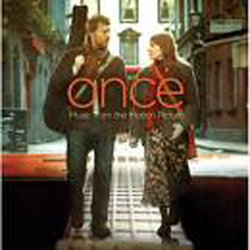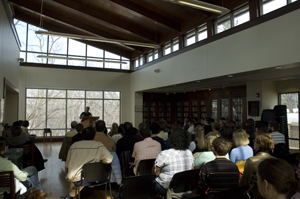“My psychological state when I start a screenplay is always the same. It’s a mix of fear, anxiety and insecurity.”
Akiva Goldsman, Oscar winner (A Beautiful Mind)
“Who is your hero, what does he want, and what stands in his way?”
Paddy Chayefsky (Network)
Three-time Oscar winner
How do you start your story? Something must happen to set your story in motion. Some call this an inciting incident, a hook, or a catalyst. When this event or situation happens it disrupts the life of your protagonist. It sets them on a quest.
It must be a dynamic event. An event that rocks their world and one in which they must fight to correct. And most of the times the inciting incidents are easy to spot.
Juno finds out she’s pregnant (Juno)
E.T. misses his ride (E.T.)
The Italian Stallion is chosen to fight for the championship (Rocky)
A shark eats a girl on a late night swim in the ocean (Jaws)
A sports agent writes a controversial mission statement (Jerry Maguire)
Zack Mayo signs up for officer training (An Officer and a Gentleman)
Dr. Richard Kimble’s wife is killed (The Fugitive)
Miss Daisy wrecks her car (Driving Miss Daisy)
Charlie Kane dies just after saying “Rosebud” (Citizen Kane)
Jack wins a ticket on the Titanic boat (Titanic)
Thinking she’s getting engaged her boyfriend break-ups with her (Legally Blond)
Charlie Babbit’s gets news that his dad is dead (Rain Man)
Nemo is captured by fishermen (Finding Nemo)
The war happens (The Pianist)
A Helicopter is shot down (Black Hawk Down)
Ferris takes the day off (Ferris Bueller’s Day Off)
Will solves a difficult mathematical equation (Good Will Hunting)
The oven breaks on Thanksgiving day (Pieces of April)
A special bike is stolen (Pee Wee’s Big Adventure)
A large family goes on vacation leaving a child behind (Home Alone)
A law grad takes an offer for what looks like the perfect job (The Firm)
The movie opens with a man face down in water (Sunset Blvd.)
The movie opens with a man face down in water (Bourne Identity)
Boy wishes that he was bigger and wakes up a grown-up (Big)
A farmer hears a voice telling him “If you build it he will come” (Field of Dreams)
“As long as the protagonist wants something, the audience will want something.”
David Mamet (The Verdict)
Two Oscar nominations
Often inciting incidents boil down to the worst things that can happen in your life:
Divorce (Kramer vs. Kramer)
Murder (Witness)
Illness (The Doctor)
Shooting victim (Regarding Henry)
Plane crash (Castaway)
Financial Crisis (The Perfect Storm)
Quitting a job (Lost in America)
Taking the perfect job (The Firm)
Aging (City Slickers)
Dying (The Bucket List)
Kidnapping (Ransom)
Natural Disaster (Wizard of Oz)
Recession (Indecent Proposal)
Things that make newspaper headlines on a regular basis. They are headlines because they get our attention. What’s the old newspaper expression, “If it bleeds, it leads.”
These all set the story in motion. Like a boxer’s one-two punch they often have a set-up & payoff:
Jerry Maguire writes mission statement—gets fired.
Dr. Richard Kimble’s wife is killed—he’s charged with murder—he decides to flee bus wreck and track down killer.
Miss Daisy wrecks car—Hoke is hired to be her driver.
The shark attacks the girl—the sheriff finds her body, well, an arm.
Charlie Babbit’s dad dies in Rain Man—he learns he’s out of the will, well, he gets the car and the award winning rose bushes, but not the millions he hoped for.
Ferris takes the day off—Principle wants to catch him skipping school
Someone has to hear Charlie Kane say “Rosebud” or there can’t be the quest to find out what it means. (Never mind that nobody is around to hear the words actually being said.)
You could argue that if the girl dies in the ocean without being discovered then the case is written off as a drunk girl drowning, so which is the inciting incident? But let’s not get hung up on technical things or we’ll say the beer is the inciting incident…or the moment the beer was bought. Chalk it up to a cause and effect. Find your inciting incident and get on with writing your story.
If the inciting incidents doesn’t happen then the movies doesn’t happen. Writer Skip Press asks, “Will this event put my main character on a path to his ultimate goal from which there is no turning back?”
Sometimes this event happens in the first scene, but usually within the first ten pages, and always within the first act. Syd Field notes that in studying Joe Eszterhas scripts he noticed, “In most cases…the inciting incident was a cinematic tool he used to set up the story from page one, word one.”
If you’ve ever found yourself watching a movie and wondering when it’s going to start the cause is usually too much time was spent setting up the inciting incident. The moment needs to come when it will have the most impact, but in our ADD culture it’s hard for viewers (and studio readers) to wait too long for the inciting incident. Over and over again that’s why you will hear about the importance of the first 10 pages of your script. It sets the tone of your story, and gives us an indication of who the characters are and what they want.
The inciting incident must happen on screen and it must be dynamic. It gets our attention and the attention of our protagonist. If our protagonist doesn’t react to this then you have no movie.
The climax of the film will be tied into this inciting incident. Think of them like bookends that hold your story in place. Rocky is picked to fight Apollo Creed and the climax is occurs after the fight is over and he’s still on his feet.
An inciting incident arouses a desire in the protagonist that he or she is willing to go to the end of the line to get. Rocky can’t say, “I don’t even have a locker. I’m a bum. Maybe if I can get into shape.” Well, he could but it’s a different movie.
Your audience wants to know what your story is about. They have paid money to be entertained. And they want to watch your characters wrestle with life issues. Because that’s really why we go to movies. To watch human drama be lived out in a way that helps us with our own human dramas.
So your inciting incident is what sets your protagonist in motion.
“The overwhelming majority of stories are based on a need, a problem, or an unusual situation.”
Edward Dmytryk (The Caine Mutiny)
Oscar & DGA nominations
“Find a character who’s obsessed and you have a real driving line.”
Ron Bass (Rain Man)
Oscar winner
P.S. If indeed Rocky’s inciting incident is Apollo Creed picking it fight him, it is one of the latest inciting incidents ever—it comes around the 33 minute mark.
Copyright 2008 Scott W. Smith














